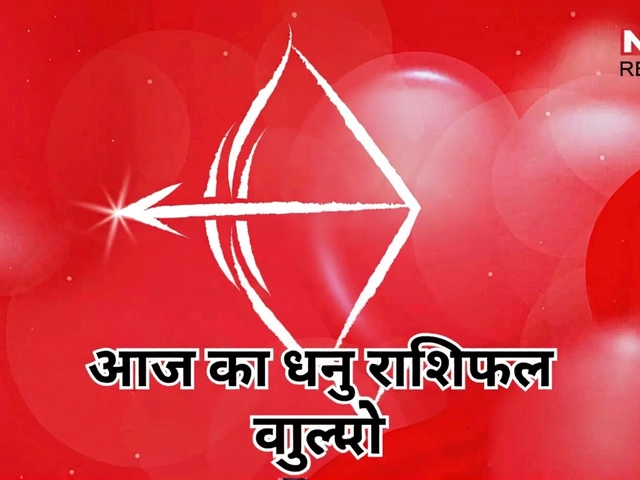When Anita, a 40‑year‑old resident of Mandrak in Aligarh, vanished with her daughter Shivani's fiancé Rahul, the community was left reeling.
The elopement happened on the night of 6 April 2025, just nine days before the wedding slated for 16 April, and it wasn’t a simple runaway – Anita walked away with ₹2.5 lakh in cash and a trove of gold‑and‑silver jewellery earmarked for the ceremony.
Jitendra Kumar, Shivani’s father and Anita’s husband, filed a complaint at the Mandrak police station after discovering the missing cash and ornaments. The investigation was taken over by Sub‑Inspector Arvind Kumar, who confirmed the couple fled to Uttarakhand after a series of social‑media reels gave away their location.
Background: A Wedding in the Making
Shivani, 20, had been preparing for her wedding since early 2024. Invitations were printed, the venue booked, and family members from nearby districts were arriving in Aligarh to help with décor. The bride’s mother, Anita, traditionally coordinated the jewellery and cash gifts, setting aside the precious items in a locked cupboard.
Rahul, a 28‑year‑old software technician employed in Dehradun, Uttarakhand, had met Shivani’s family through a matrimonial portal in late 2023. According to neighbours, his visits to the Kumar household were initially limited to brief, polite chats.
What changed? Close relatives say Rahul started spending longer periods at the Kumar home, often under the pretext of "checking wedding outfits". He even gifted Anita a brand‑new smartphone – a gesture that seemed harmless until the police pieced together the timeline.
Chronology of the Incident
- 6 April 2025, 7 pm – Rahul tells his father over a phone call: "You've troubled me enough for 20 years. Forget us now." He then leaves the Kumar residence claiming he’s heading to a market for wedding attire.
- 6 April 2025, 8 pm – Anita steps out of the house without a word. No farewell text, no knock.
- 6 April 2025, 9 pm – Jitendra discovers the jewellery box empty and the cash drawer hollow.
- 7 April 2025 – Police file an FIR; CCTV footage shows a white sedan leaving Mandrak on the highway toward Delhi, later turning toward Uttarakhand.
- 9 April 2025 – A short video on Instagram Reels shows a woman resembling Anita and a man matching Rahul’s description boarding a bus in Dehradun; the clip goes viral.
- 9 April 2025 – Uttarakhand police, coordinated by Aligarh’s SHO, locate the couple at a guest house in Nainital; they are taken into custody.
All these steps unfolded within a span of three days, leaving the bride‑to‑be and her family scrambling for answers.
Responses from the Families and Authorities
Shivani, visibly shaken, told local reporters: "My mother has taken everything—money, jewellery, even our dignity. We don’t want any relationship with her now. We only want our stolen belongings returned." Her words echoed a sentiment shared by many in the tightly‑knit Mandrak neighbourhood.
Jitendra, meanwhile, said in a statement to Times of India: "I never imagined this betrayal. Anita’s actions have not only ruined our wedding plans but have shattered our family's reputation in the community." He added that legal proceedings are being filed under sections of the Indian Penal Code dealing with cheating and criminal breach of trust.
Police Sub‑Inspector Arvind Kumar assured the public that "the investigation is ongoing, and we are collaborating with Uttarakhand authorities to secure the return of the stolen assets." He also mentioned that a forensic accountant has been appointed to trace the cash flow in case the money was moved through informal channels.
Impact Assessment and Expert Analysis
Criminologists point out that elopements involving family members are rare, but they do highlight vulnerabilities in traditional Indian wedding economics. "When a mother is the custodian of cash and jewellery, she becomes a high‑value target for deceit," says Dr. Meera Sinha, a sociologist at the University of Lucknow.
Financial experts estimate that the total loss, including the sentimental value of heirloom pieces, could exceed ₹3 million when market prices are factored in.
From a legal standpoint, the case sits at the intersection of “cheating” (Section 420 IPC) and “dowry‑related offences” (Section 498A), even though the motive appears personal rather than financial.

Future Implications: How Communities Might Respond
Local wedding planners are already tightening security protocols. Several vendors now recommend that families keep a detailed inventory of jewellery and cash, preferably stored in a bank locker rather than at home.
Community leaders in Aligarh are calling for awareness programmes that address the emotional and legal repercussions of intra‑family betrayals. "We need to educate families about the red flags of grooming and manipulation," says MLA Rajesh Sharma, who plans to raise the issue in the state assembly.
Meanwhile, the legal battle is just beginning. If Anita and Rahul are convicted, they could face up to ten years in prison, along with restitution orders for the stolen valuables.
Background Deep Dive: Weddings, Money, and Trust in North India
The average Indian wedding today can cost anywhere between ₹5 lakh to ₹20 lakh, with a significant portion allocated to gold jewellery – a cultural symbol of prosperity and family honor. In many North Indian households, the bride’s mother oversees the procurement and safekeeping of these assets.
Historically, incidents of family members misappropriating wedding funds are documented in folklore, but modern media coverage of such cases remains sparse. The Aligarh episode is unusual because it blends emotional betrayal with a relatively large cash theft, making it a headline‑grabbing story.
Social‑media platforms amplify these events, turning private family disputes into public spectacles. The rapid spread of the couple’s Reels on Instagram not only aided police but also sparked a nationwide debate on privacy, consent, and the ethics of broadcasting personal crises.
- Key Fact: The missing cash amounted to ₹2.5 lakh; jewellery worth an estimated ₹3 million is still unrecovered.
- Key Fact: Police traced the duo within three days, thanks to a viral video.
- Key Fact: Legal experts suggest charges under Sections 420, 498A, and 406 of the IPC.
- Key Fact: Community leaders are urging stricter safeguards for wedding assets.
Frequently Asked Questions
How does this affect other families planning weddings in Uttar Pradesh?
The incident has prompted many families to reconsider storing cash and jewellery at home. Bridal consultants now advise securing valuable items in bank lockers and hiring professional security for large events.
What legal charges can Anita and Rahul face?
Authorities can charge them under Section 420 (cheating), Section 498A (dowry‑related violence), and Section 406 (criminal breach of trust). If convicted, they could face up to ten years imprisonment and be ordered to repay the stolen assets.
Why was the police able to locate the couple so quickly?
A short video posted by the duo on Instagram Reels showed their location in Dehradun. The clip went viral, allowing Aligarh and Uttarakhand police to coordinate a rapid response and track their movements through bus and railway CCTV footage.
What does this case reveal about the role of mothers in Indian weddings?
Mothers traditionally act as custodians of wedding wealth, which makes them both trusted and vulnerable. This case highlights the need for clearer financial safeguards and open communication within families to prevent misuse of that trust.
Will the stolen jewellery be recovered?
Recovery depends on whether the items can be traced through pawn records or jewelry appraisals. Police have engaged a forensic accountant to follow the money trail, but so far the gold and silver pieces remain missing.

